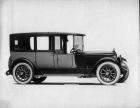|
Re: brake lights
|
||||
|---|---|---|---|---|
|
Home away from home

|
Hi Kev,
I wasn't aware of the problem caused by the break fluid. What is the advantage of using silicon fluid? Bob
Posted on: 2008/7/9 19:10
|
|||
|
||||
|
Re: brake lights
|
||||
|---|---|---|---|---|
|
Home away from home

|
It doesn't eat paint.
Posted on: 2008/7/9 20:02
|
|||
|
||||
|
Re: brake lights
|
||||
|---|---|---|---|---|
|
Just can't stay away

|
wow it's good that my brake light issue sparked alot of interest
not only does the silicon oil prevent moisture in the brake system it also has a higher boiling point than regular brake fluid. just beware not to mix with regular brake fluid. i think using a mechanical switch is a small price to pay to have dependable brake lights one of the switches that I looked at, said that it was silicon compatable but I could not determine if the thread size was the same.
Posted on: 2008/7/9 20:52
|
|||
|
||||
|
Re: brake lights
|
||||
|---|---|---|---|---|
|
Webmaster
|
As Randy said the biggest advantage is that it doesnt absorb mositure from the atmoshpere, which causes the brake line, wheel and master cylinders to rust from the inside like DOT 3, and 4 does. But everything has a trade off, and the you have to fill the system with out aerating the fluid or it's a real pain in the butt to bleed. Also if you make the switch, you should replace all the rubber components in the brake system with newer silicon safe versions.
Posted on: 2008/7/9 21:31
|
|||
|
-BigKev
1954 Packard Clipper Deluxe Touring Sedan -> Registry | Project Blog 1937 Packard 115-C Convertible Coupe -> Registry | Project Blog |
||||
|
||||
|
Re: brake lights
|
||||
|---|---|---|---|---|
|
Home away from home

|
Great information. Think I'll keep the old fluid in my car. Aren't the break systems sealed? If so how does the moisture get in? Seems I have had cars where the wheel cylinders were very rusty inside but after rebuild were fine. Thought maybe the car sat under water or something.
My 1973 Charger is still on it's original wheel cylinders and is rust free. The master cylinder has been replaced because it would leak down at stop lights. Don't remember any rust. Always thought that the moisture got in because the internal rubber was bad not the other way around.
Posted on: 2008/7/9 22:32
|
|||
|
||||
|
Re: brake lights
|
||||
|---|---|---|---|---|
|
Webmaster
|
Most brake systems (Packard included) have an atmospheric vent that is located within the master cylinder, and the moisture get absorbed there.
Posted on: 2008/7/10 5:56
|
|||
|
-BigKev
1954 Packard Clipper Deluxe Touring Sedan -> Registry | Project Blog 1937 Packard 115-C Convertible Coupe -> Registry | Project Blog |
||||
|
||||
|
Re: brake lights
|
||||
|---|---|---|---|---|
|
Forum Ambassador

|
Regardless of the type of brake fluid, as the fluid level goes down in the master cylinder, as for example when the brakes are applied, atmostpheric air is drawn in thru the vent in the cap to occupy the new space in the master above the fluid level, and of course the air contains moisture, the amount depending on the relative humidity. When the fluid level rises again, this air is expelled and the cycle repeated each time you use the brakes. What happens after that is a matter of differences in the solubility of the moisture in the fluid. The difference between traditional and silicone fluid is that the traditional fluid directly absorbs some of this moisture and ultimately disperses it throughout the fluid. With silicone fluid, though the fluid doesn't absorb the moisture per se, some still enters and remains in the system, and since it is insoluble in but more dense than the fluid, it accumulates in the lowest point of the system. So regardless of which choice you make, brake fluids should be purged and replaced at regular intervals, but less frequently with silicone fluid.
Posted on: 2008/7/10 8:05
|
|||
|
||||
|
Re: brake lights
|
||||
|---|---|---|---|---|
|
Forum Ambassador

|
The fill cap is vented to atmosphere. Later systems (typically, dual-chambered master cylinders, starting in the late 1960s) had a cap/cover with a rubber diaphragm to seal the fluid reservoir from atmosphere. Still, I've read that glycol-based fluids (DOT-3 and -4) can draw moisture (albeit slowly) through rubber hoses, seals and membranes. As such, it's best to drain refill and bleed the systems using these fluids every few years.
Posted on: 2008/7/10 8:06
|
|||
|
||||










